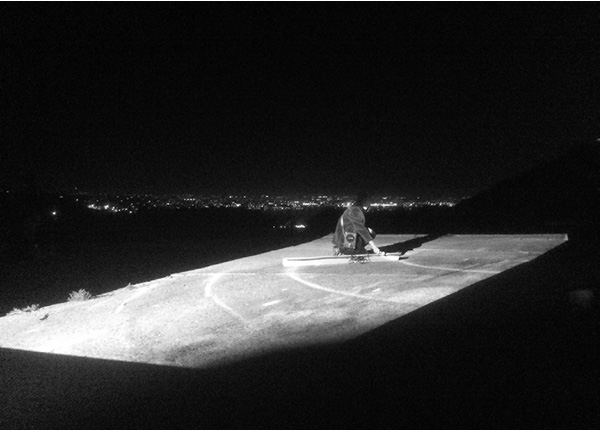
AFFECTIVE MEDITATION W/ LANGUAGE, BEAM, MEMORIAL-AS-ACTION
first performed on November 14, 2015
A Ship in the Woods / Cabrillo National Monument, San Diego, CA
performed once in 2015
KIM-ANH SCHREIBER
Morgan Mandalay
San Diego, CA
825945379k825945379i825945379m825945379.825945379s825945379c825945379h825945379r825945379e825945379i825945379b825945379e825945379r825945379@825945379g825945379m825945379a825945379i825945379l825945379.825945379c825945379o825945379m
kimschreiber.com
AFFECTIVE MEDITATION W/ LANGUAGE, BEAM, MEMORIAL-AS-ACTION
KIM-ANH SCHREIBER
An “Affective Meditation” was a popular Medieval meditation technique in which religious devotees were asked to concentrate on vivid religious imagery, conjured either through looking at illuminated manuscripts or listening to poetry. The goal of the meditation was for the viewer to engage with the scene as if she or he were physically present, stirring up feelings of love, fear, grief, and/or repentance for sin.
On November 14, 2015, as part of A Ship in the Wood’s Convergence at Cabrillo National Monument, I performed a kind of Affective Meditation, overlaying images of the arrival of Juan Rodriguez Cabrillo with my own mother’s evacuation from Saigon, Vietnam, with the present-day mythic rescue of thousands of rubber crafts floating in the Aegean Sea. The performance overlooked the San Diego Bay, naval ships arriving to shore, and a military graveyard.
The meditation had two guides: myself, and my worry doll. The worry doll, entitled PAIN KILLER, was a 4 x 4 beam of wood cut to my height, 5’8”. It was painted a color called Lavender Sand and had a silver line spray-painted down the middle. There was a small incision in its sacral joint and a vitamin inserted into the hip. During the performance, PAIN KILLER was implanted with a voice box and, with a backdrop of ambient music and folk song, administered a poetry reading while lying in an animated .gif pool. PAIN KILLER had one important metaphor to communicate: that the wood wants to be more than a beam (it wants to be a boat) and that the body wants to transcend the beam.
I narrated the action, allowing memories to surface and reform – for an instant. As we became situated between the historical geographical elsewhere and conceptual nowhere, meditation and memorial, borders of sovereignty and borders of art making, body politics and body poetics, the performance used these nested stages to navigate the audience through the experience of disruption and displacement, questioning our own methods of witnessing.